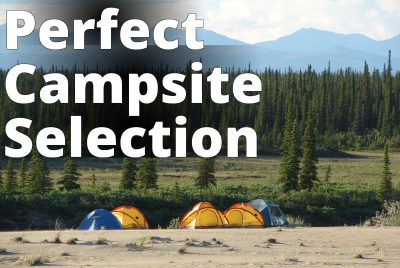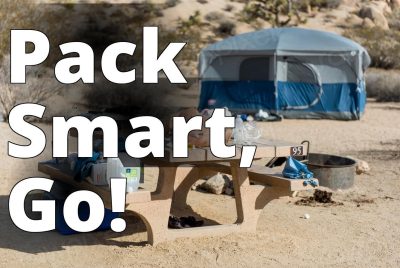Best Camping Setups Ideas And Tips: Perfect For Family 2024
Top-Rated and User-Favorite Camping Setups for 2023: A Comprehensive Guide
In a world where technology often dominates our lives, taking a break to bond with our best friends or family amidst the serene lap of nature becomes the most important thing.
Planning a camping trip can be a thrilling experience, especially when considering the myriad of setup ideas available to create the perfect retreat.
Here, we bring you the best camping setups for families, where the little things count in making the experience delightful for everyone, from little kids to adults.
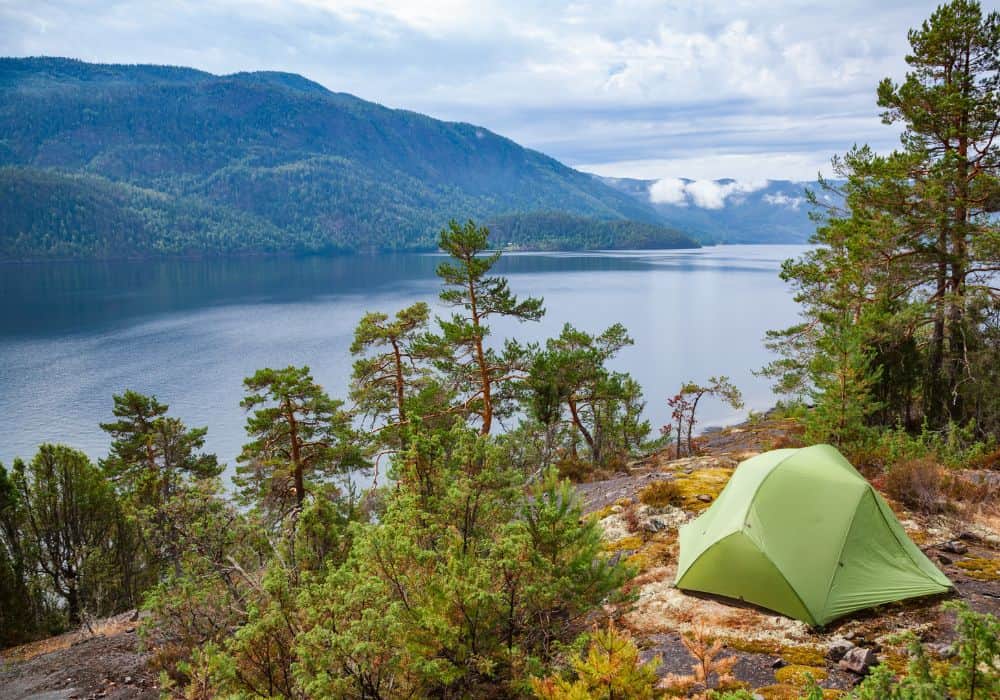
The Ideal Campsite: Your Home Amidst Nature
Choosing a good campsite is the first step in your camping expedition. A site that’s surrounded by nearby trees provides not only shade but also a delightful play area for little kids.
An RV campsite can offer a comfortable space with all necessary amenities, making it an excellent choice for families.
However, if you prefer a more rustic setup, a campsite area with an ample floor area to set up tents and a common area for gathering would be ideal.
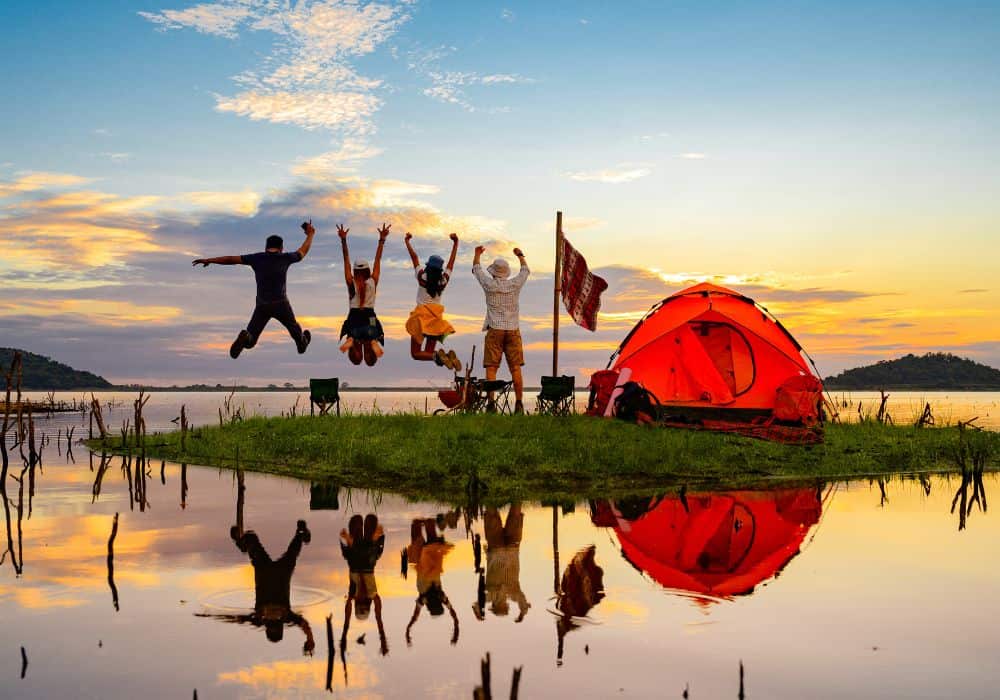
Shelter: Your Haven in the Wilderness
The type of tent you choose can make or break your camping experience. Products like the OneTigris Stella 4 Season tent offer a balance between comfort and convenience, with large doors for easy access and enough space to ensure a comfortable night’s sleep.
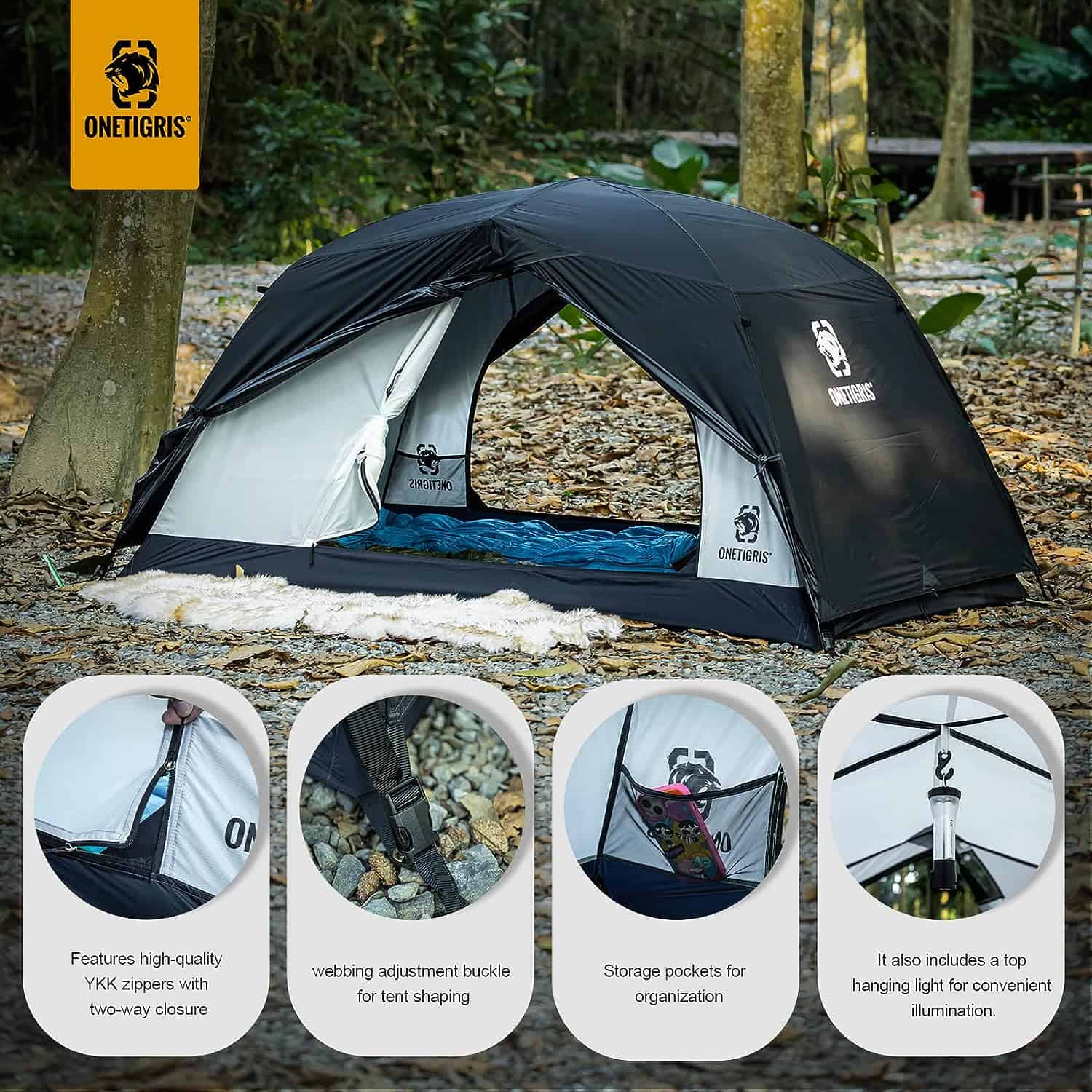
For a more expansive setup, consider the Coleman Montana 6/8 Person Tent, which provides a generous floor area to accommodate families. Camper shells can also be a viable option, offering a sturdy shelter that can be easily mounted on your vehicle.

The Heart of the Camp: The Camping Kitchen
No camping experience is complete without a well-set camping kitchen. Portable camp kitchens come with great deals nowadays and encompass various utilities and features to cook a hearty meal in the outdoors.

Equip it with water pumps for a steady water supply, making cleaning and cooking seamless. To keep the dining area clean, lay an outdoor rug, which doubles up as a stylish ground cover, adding a homey touch to your setup.
Creating Comfortable and Functional Living Spaces
Adding separate areas within your campsite can help in organizing the space better. A portable camp table can be utilized to set up a dining space, where everyone can gather for meals and bond over stories. Nearby, set up a cozy sitting area with a portable fire pit at its center.

It not only becomes a spot to enjoy the warmth during chilly evenings but also becomes the heart of social interactions.
Accessories that Make the Difference
Investing in the best camping gear is critical for a successful camping trip. Consider adding a camp shower to your gear list, providing a refreshing retreat after a day of adventures.

For a comfortable sleep, opt for closed-cell foam sleeping pads, offering insulation and cushioning from the hard ground.
An outdoor rug can be an excellent addition to the common area, creating a comfortable and clean space for children to play or to enjoy a family picnic.
Little Touches that Add to the Joy
Remember, the best parts of camping often lie in the little things that add joy and comfort to the experience.
From enjoying a night under the stars, sharing stories around the fire pit with your best friend, to enjoying the nearby flora and fauna, these small moments become the cherished memories that last a lifetime.

In conclusion, camping with family is an enriching experience, and with different approaches to setting up your campsite, you can create a unique and enjoyable retreat for everyone.
Whether it is the last tent you are packing or finding the perfect spot under the nearby trees, every step becomes a journey towards creating memories that you will cherish forever.
Remember to equip yourself with the best camping gear to ensure a seamless and enjoyable outdoor experience.
Understanding the Basics of Camping
Camping affords a unique opportunity to reconnect with nature, test your survival skills, and create lifetime memories with family and friends. For novices embarking on their first camping experience, zeroing in on what to pack may seem a daunting challenge.
Core to this is understanding that camping is more than just pitching a tent in a random location. This is where family camping setups ideas come in handy, offering insightful guidelines on how to make the most out of your outdoor experience.
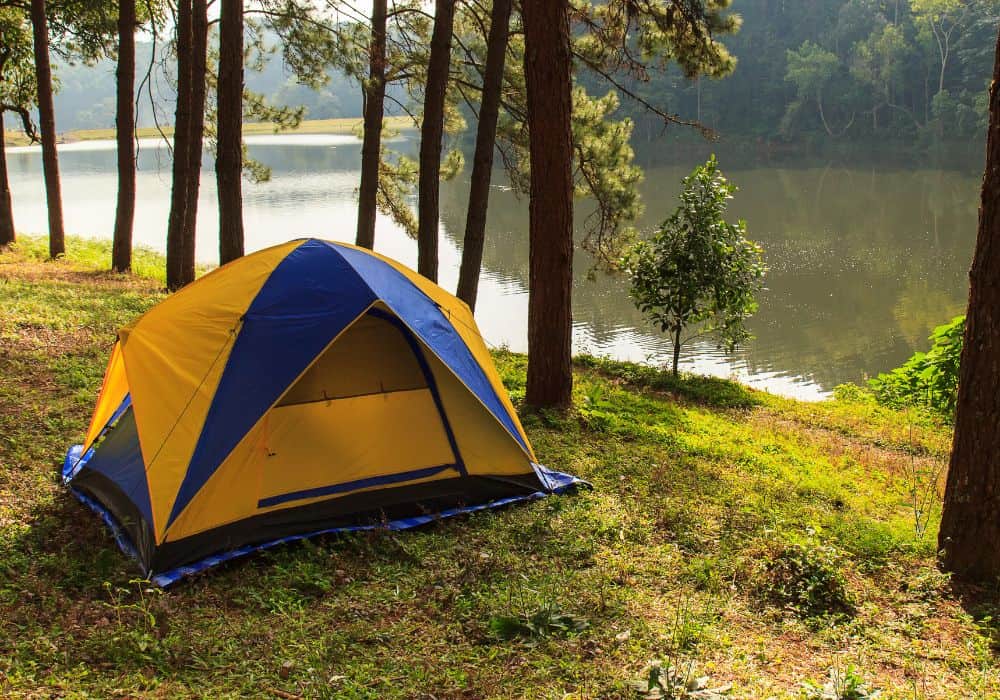
The choice of a sleeping bag is crucial to achieving comfort and warmth during the cold nights in the wild. Depending on the prevailing weather conditions, selecting an appropriate sleeping bag ensures an enjoyable and comfortable sleep under the stars.
But camping is not only sleeping. It is also about sharing meals and exciting stories around the picnic table. As such, a robust and portable picnic table could make your meal times more delightful. Fastening this understanding lays the groundwork for a successful camping experience.
Choosing the Right Camping Equipment
Embarking on a camping trip into the great outdoors necessitates careful preparation, particularly when it comes to selecting your gear. This step is instrumental as it ensures you have the essentials to facilitate your comfort, safety and survival during your time in wilderness.
Consider investing in high-quality camping equipment which is designed to withstand varying weather conditions and rugged outdoor environments, ensuring longevity and durability. Elements like your shelter, reliable navigation tools, and heavy-duty camping cookware are critical components for a successful expedition.
Among these camping necessities, the focus should also be on bringing along a piece of equipment that is pivotal in emergencies: a first aid kit.
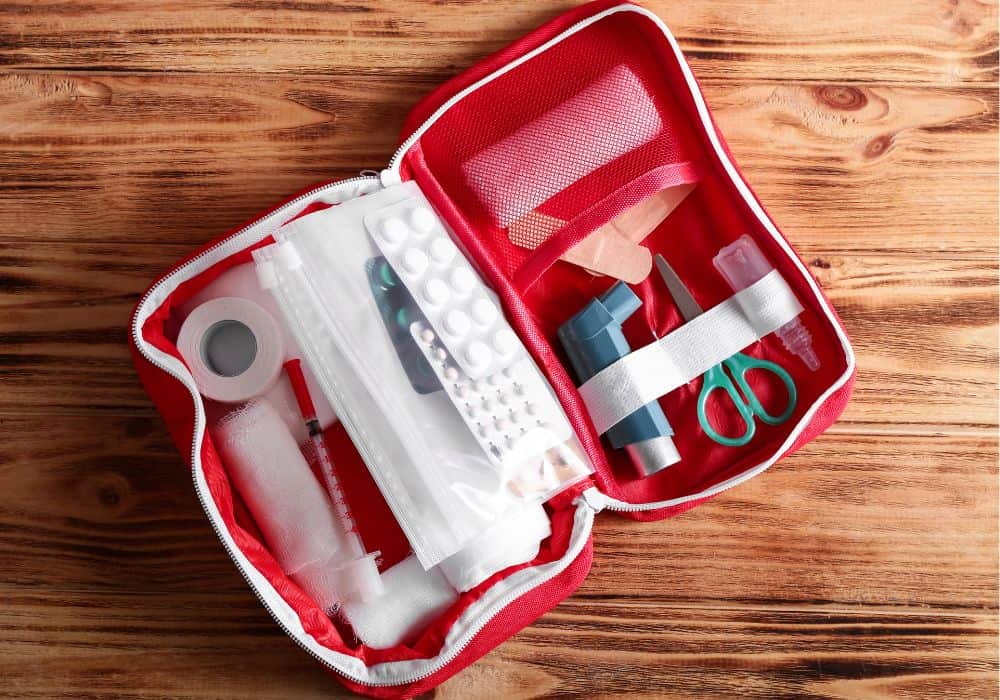
A comprehensive first aid kit includes a variety of supplies – from bandages, disinfectants, and tweezers for minor injuries or blemishes to life-saving tools and medications for severe cases such as hypothermia, breathing difficulties or allergic reactions.
Having these items on hand equips individuals to handle unforeseen medical emergencies promptly – a provision that is incredibly important, given that immediate medical help might not be readily accessible in remote camping locations.
The Importance of a Quality Tent
Venturing into the great outdoors and immersing oneself in nature can be an exhilarating experience. Central to the joy and safety of this endeavor is the quality of one’s tent. Tent camping is more than just finding a place to sleep; it’s about creating a home away from home.
The best camping tents offer a perfect synthesis of durability and comfort, shielding one from inclement weather while also providing a cozy space to rest after a long day of exploration.
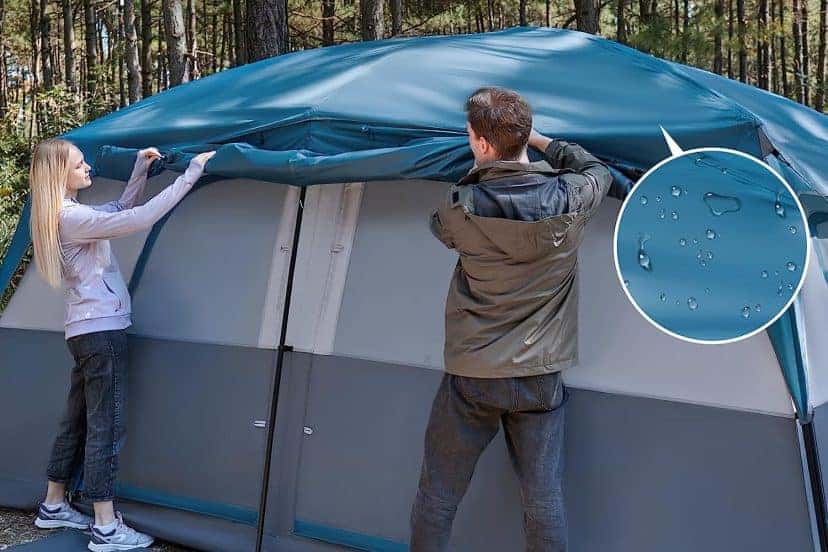
Investing in a top-quality tent is always a good idea for those who often find themselves braving the wilderness.
Resilience to harsh conditions, spacious interiors, user-friendly setup mechanisms, and solid manufacturing materials are just a few characteristics of premium tents.
A tent’s quality transcends its immediate purpose; it can be the difference between a troublesome outdoor experience and a delightful adventure. This is why serious campers do not hesitate to allocate a significant part of their budget to procure the best camping tents in the market.
Ideal Campsite Location Selection
Selecting the right campsite location requires a blend of practicality and preference. A flat ground is desirable as it provides an easy set-up for tent or rooftop tents and offers sufficiency for improvised storage space for your camping gear.
It’s essential to choose a location that’s not prone to flooding, and one that would provide natural shade to protect you from sudden changes in weather conditions.

Convenience is another critical factor to remember. Your camping spot should have easy access to necessities like water sources and bathroom facilities. Nearness to hiking trails or fishing spots can also enhance the camping experience.
However, it’s crucial not to camp too close to water bodies as it can lead to problems with insects and wildlife. Ensuring your campsite provides both convenience and safety will enhance your overall camping experience.
Creating a Comfortable Sleeping Arrangement
When planning a camping trip, one of the best ways to ensure a good night’s sleep is with a sturdy and comfortable camping cot. A quality cot not only provides a soft and stable place to rest, but it also keeps you elevated off the ground, away from the perceivable outdoor chill and unsuspecting critters that could interrupt a peaceful night’s rest.
Investing in a well-made camping cot can also alleviate common camping discomforts such as back pain and stiffness, enhancing the overall sleep quality.
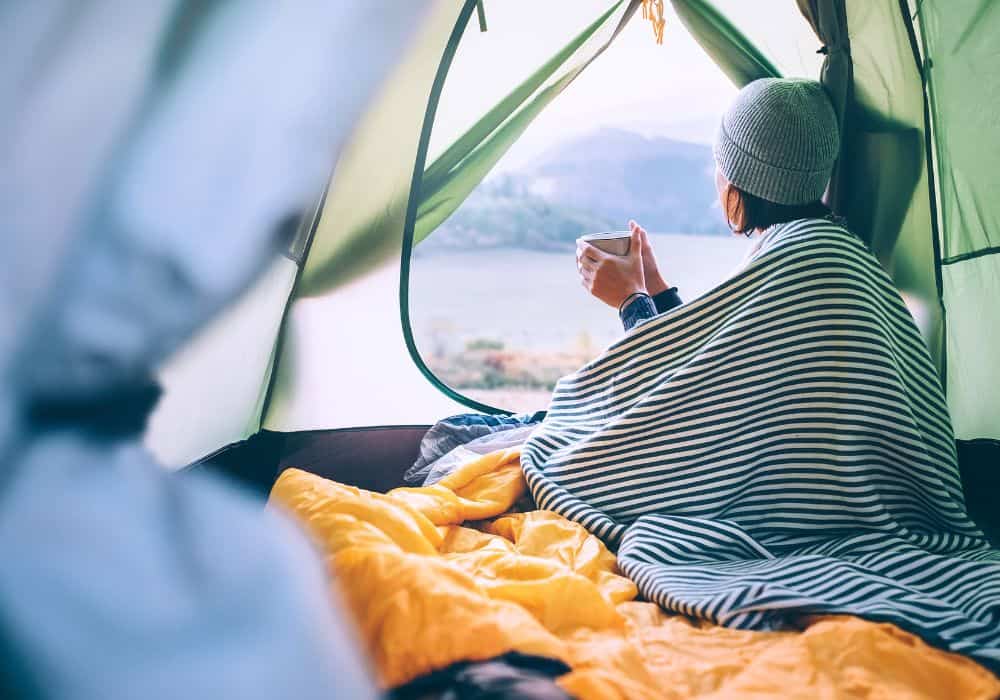
For recreation and relaxation during daytime hours or simply enjoying the tranquility of nature, camp chairs are an invaluable component of camping gear. Lightweight, portable and designed specifically for outdoor use, they offer a comfortable spot to read, chat, or even doze off.
Moreover, by having specified areas for sleeping and sitting, it allows for a more structured and organized camping experience, encouraging campers to better respect their surroundings. These small considerations can greatly enhance your camping experience, making it as enjoyable and comfortable as possible.
Cooking Essentials for Outdoor Camping
Preparing meals outdoors, while surrounded by nature, can be both a rewarding and fun part of the camping experience. It’s important to be meticulous in planning the camping meals, and even more so, ensuring you have all the necessary tools and equipment.
If you’re camping near your vehicle, utilizing a truck bed as a makeshift kitchen space can significantly improve your cooking experience. This can greatly help facilitate food prep and cooking, provided that it’s done safely and hygienically.

Finding a water source nearby is crucial not just for hygiene and personal use, but for cooking as well. It’s a great way to maintain the freshness of your ingredients and clean your equipment as needed.
Always make it a point to carry lightweight, durable, easy-to-clean cooking essentials such as a portable stove, nesting pots, pans, cutlery, and sturdy cooking utensils. Packing efficiently and thoughtfully will elevate your camping culinary experience, ensuring it is as enjoyable and hassle-free as possible.
Keeping Your Campsite Organized
High winds at a campsite can be quite challenging, leading to disarray which can eventually complicate the camping experience. Therefore, always take necessary precautions to secure your items and prevent them from blowing away.
Consider your campsite layout before you start setting up. This includes positioning your tent away from prevailing winds or using natural windbreaks like trees or bushes if available, and packing your items securely.
A well-organized campsite isn’t just for aesthetics; it contributes to the overall enjoyment and success of the camping trip. Even a single person can maintain a tidy campsite by utilizing camp containers or compartments to optimize extra space and keep everything in place.
Use storage boxes for kitchen gear and coolers for food storage to avoid cooking messes, waist-height tables for cooking, and portable camp closets or shelves to arrange your clothing and accessories. Remember, a clean and organized campsite takes patience and effort but it certainly enhances the camping experience.
Pack a First Aid Kit for Emergencies
Having a well-stocked first aid kit is paramount during any camping trip. Accidents can occur at any time, whether it be a fall while hiking, a burn from the campfire, or a cut from setting up fiberglass poles for your best tent.
A quality first aid kit should contain all the essentials: bandaids in various sizes and shapes, antiseptic wipes, tweezers, scissors, sterile gauze pads and adhesive tape, an instant cold pack, disposable gloves, a thermometer, and a first aid manual.
Depending on your group’s needs, you may also want to include necessary prescription medications, an EpiPen for severe allergic reactions, or snake bite kits.
When camping with large groups, the probability of someone getting injured increases, reinforcing the importance of having a first aid kit at hand. Remember, having the necessary first aid supplies can not only provide immediate relief but could potentially save a life.
Equally important is knowing how to use the items in your first aid kit effectively – consider taking a certified first aid course to equip yourself with this potentially life-saving knowledge.
The perfect camping experience hinges on a balance between appreciating the great outdoors and ensuring personal safety measures are in place.
Creating a Campfire Safely
Creating a fabulous campfire can add much charm to your camping experience, but safety should always be top priority. It starts with selecting the right location for the campfire. Select an area that is away from your car camping tents, and far from any shrubbery, trees, or potential flammables.
The ground under and around the fire should be clear of leaves, twigs, or other small combustibles. Always abide by local rules and advisories for open fires, any irresponsible behaviour can lead not only to personal harm but also significant environmental damage.
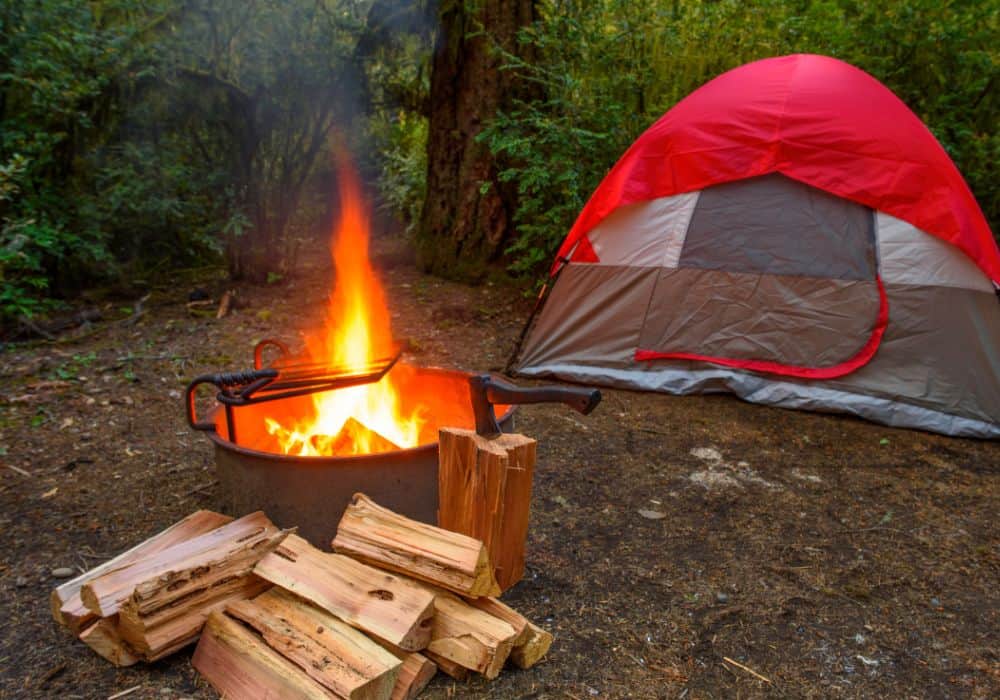
Investing in reliable fire starters can simplify this process. Some links in online stores may earn you a small commission, but it is worth it considering the ease of use and added safety they provide compared to dealing with matches or lighters in windy conditions.
Always keep a bucket of water or a fire extinguisher handy. Let the fire burn down to ash when you’re done and douse it with water, stir, and repeat until you can safely touch the extinguished embers. Creating a campfire safely can greatly enrich your camping experience while honouring the principles of nature-safe camping.
Planning Healthy and Easy-to-Cook Meals
When it comes to camping, meal preparation often becomes a challenge due to limited resources and space. A common mistake among campers is resorting to prepackaged or processed food, which is not the best choice for health-conscious individuals.
Investing a little bit of time into planning can change your outdoor culinary experience. Consider loading up your pickup trucks with fresh fruits, vegetables and lean meats. These can be cooked over a fire ring or a camp stove, significantly elevating your standard camping meal to something healthier and more delicious.
Using a camp stove allows you to control the heat better compared to an open fire, ensuring your food is cooked properly without being burnt or undercooked. This is particularly crucial when cooking meats to eliminate the risk of foodborne illnesses.
On top of that, the inclusion of a fire ring brings an authentic camping feel to your meal times, promising not just good food but also an unforgettable experience. It’s important to remember, however, that safety should always be a priority when cooking outdoors. Keep all flammable items away from the fire, and never leave it unattended.
Incorporating Fun Camping Activities
An easy way to make your camping trip more enjoyable is by incorporating a variety of fun activities. Whether you’re an adult, a child, or somewhere in between, there’s no shortage of things to do in the unique environment provided by the great outdoors.
Activities like fishing, playing frisbee, or bird-watching can be a simple and accessible source of enjoyment. Storytelling around the campfire at night is always an excellent choice that promotes bonding and camaraderie among campers.
If you’re camping in a good place that allows for it, you can even host small competitions such as sack races or scavenger hunts; this works especially well when camping in a group. Boardgames and card games are a great addition to your camping setup, which can be enjoyed inside the tent during poor weather.
Some prefer more physically engaging activities: canoeing, hiking or just exploring nature. Remember, the purpose is to have fun and make the trip more enjoyable.
Safety Measures to Consider When Camping
Finding the perfect campsite isn’t just about locating the spot with the most breath-taking views or convenient proximity to trails. An often overlooked but vital aspect when choosing a campsite is to consider its safety features. The first thing you want to factor in is the landscape.
It is crucial to look for potential hazards such as signs of frequent animal visits, proximity to water bodies, and unstable or falling rocks. The threat of extreme weather conditions, like flash floods or forest fires, should also be accounted for.
A safe and organized gear storage plays a significant role in maintaining campsite safety. Camping equipment should be stored in a dry and secure location to prevent accidental injury or damage. Sharp supplies such as knives, pitchforks and other tools should be safeguarded in locked containers when not in use.
All food items need to be appropriately sealed and put away to deter wildlife from entering the campsite. Safety-centric behavior like these can largely minimize potential risks associated with camping.
The Role of Weather in Your Camping Experience
Successful camping trips require a deep understanding of the weather’s impact on your outdoor experience. Unpredictable weather conditions can quickly transform a tranquil wilderness experience into a challenging test of survival.
For example, while light rain can play a refreshing role, enhancing the beauty of your surroundings, heavy rainfall could create muddy and uncomfortable conditions. Fluctuations in temperature, too, must be closely monitored as that can influence your layering strategy and choice of sleeping equipment.
Preparation is key when navigating the relationship between weather and camping. Take the case of strong winds—these can dismantle a poorly secured tent within minutes. Sturdy stakes and extra tarp are an absolute necessity to create wind-resilient shelter.
Sunny days make for a great addition to camping journeys, but they also demand sun safety measures, including hats, sunscreen, and hydration. Being observant and respectful of weather patterns not only ensures your safety but also deepens the enjoyment of your camping experience.
And remember, when in doubt, always prepare for the unexpected. Weatherproof your camping experiences well.
Keeping Wildlife at Bay and Campsite Cleanliness
When venturing into national parks, the management always places emphasis on keeping a clean campsite and not attracting wildlife, and there is a good reason for this.
Camping amidst the wilderness puts us in direct contact with various species of wildlife, and without proper precautions, we risk disturbing their natural habitats. Cleanliness is also a cardinal rule of camping.
Not only does it maintain the aesthetic beauty of your surroundings, but it also plays a significant role in preserving the ecological balance of these protected areas.
Keeping wildlife at bay starts with a great tent that is sturdy and secure. Ensuring your tent is properly closed at all times, especially during the nights or when your campsite is unattended, will help prevent small critters from venturing inside.
Regularly disposing of waste and securing food items are also crucial measures. Hence, adhering to campsite cleanliness and maintaining distance from the wildlife aren’t just courtesy rules but an essential part of co-existing with nature.
Night Time Setup: Lighting and Security
When it comes to camping, properly setting up lighting during the nighttime is essential for the security and comfort of the campers. It is a great choice to pack multiple light sources such as headlamps, lanterns and flashlights to cater to varying needs.
For instance, headlamps work well for tasks that require both hands, lanterns are an ideal pick for illuminating a big space, and flashlights provide focused lighting, especially for security purposes.
During camping road trips, the night time setup should always involve taking measures to secure the campsite, irrespective of the number of people in your group. This should include protecting your food from attracting animals, securing your tents, and establishing a plan to deal with any emergencies.
A camping road trip is truly enjoyable when all mates feel safe and comfortable, and much of this heavily relies on how well you set up your campsite at night.
Considerations for Camping with Pets
Camping with pets can present its own unique set of challenges and considerations. With appropriate planning, though, these can be easily managed to ensure a fun and safe trip for both you and your furry companion.
It’s essential when choosing your shelter, like ground tents, to ensure they are spacious and durable enough to accommodate both you and your pet. Among the many options available on the market, the North Face Wawona stands out. With its ample space and sturdy design, it’s ideal for pet owners.
Selecting the right bedding is another vital factor. While it might be tempting to have your pet curl up directly on the tent floor, a better option is using an air mattress. Not only does an air mattress offer increased comfort for your pet, it also adds an additional layer of insulation between them and the cold ground.
This can be incredibly pertinent in colder climates or during off-peak camping seasons. Plan well, and your camping trip with pets will be an experience to cherish.
Guidelines for Leave No Trace Camping
The concept of Leave No Trace camping centers around preserving nature and the great outdoors for the enjoyment of future generations. Today’s increasing population and ever-growing interest in outdoor recreational activities such as camping, have resulted in rampant damage to our natural spaces.
To coach campers on best practices, certain guidelines have been established, which emphasize the significance of minimal impact camping to preserve our natural spaces.
The first rule involves selecting an appropriate campsite with a relatively harsh and spacious interior. Spaces with rugged and natural surfaces, like established camping areas, are most suited.
These areas can comfortably accommodate a few square feet of a tent and sleeping pad without causing damage or encroaching on the surrounding flora and fauna.
The use of a sleeping pad creates a layer between the camper and the ground, providing comforts like insulation to the camper while minimizing the impact on the flora beneath.
Taking such caution while choosing your camping location is a significant step towards embracing and practicing the paradigm of Leave No Trace Camping.
Camping Etiquette: Respect for Nature and Fellow Campers
Camping is a popular option for both outdoor enthusiasts and holidaymakers. It offers the opportunity to connect with nature, as well as permitting vacationers to socialize with their neighbours in a unique bonding environment. However, the proximity of campsites typically implies sharing the space with others.
Hence, it becomes essential to provide enough room for everyone to enjoy their camping experience. Keep conversations and noises to a reasonable level, especially during quiet hours, to ensure that everyone, including you, can get a good night’s sleep.
Furthermore, respect for nature is of paramount importance while camping. Harmful human activities have caused significant damage to various natural habitats, making it more necessary than ever for campers to act thoughtfully.
Choosing not to leave behind trash, limiting any damage to the flora and fauna, and keeping a safe distance from wildlife are all integral parts of maintaining the camping spaces we so love. In the end, camping etiquette is not just about ensuring a pleasant experience for all campers, but also about preserving the natural environment for future generations.
Practical Clothing and Footwear for Camping
When venturing out into a camping area, the clothing you choose to wear is not merely about aesthetics, but more about functionality and comfort. It’s crucial to consider the type of terrain, weather conditions, and activities you’ll be engaging in.
Dressing in multiple light layers, rather than a single heavy one, helps manage body heat more effectively, as you can add or eliminate layers based on the temperature.
Moreover, opting for synthetic materials over cotton can better aid in moisture wicking and insulation, besides drying up faster if wet.
Always remember, pack more than what seems needed, just in case of inclement weather or unpredictable swings in temperature
Footwear is equally important if not more, ensuring that you can navigate the great outdoors without a blister in sight or a sprained ankle. Hiking boots are often the go-to choice; however, the kind of shoe should align with what the terrain demands.
A rule of thumb is to ensure the shoes are well broken-in before hitting the camping area to circumvent any last-minute discomfort. They should provide good ankle support, have enough space for your toes to wiggle, and contain a sturdy, well-gripped sole to handle bumpy, slippery surfaces with ease.
Another handy tip is to pack a pair of lightweight, water-resistant sandals for lounging around the campfire or walking to the nearby stream. It’s all about balancing practicality and comfort.
Survival Skills Everyone Should Know Before Camping.
When you head out into the wilderness, it is imperative to have a basic set of survival skills under your belt. These skills can often determine the outcome of unforeseen circumstances, like sudden shifts in weather patterns – heavy winds, for instance, can easily unsettle your carefully laid out picnic blankets or even tip over a poorly secured travel trailer.
Knowing how to deal with such situations can mean the difference between a minor inconvenience and a major ordeal.
For instance, understanding how to build a weather-resistant shelter can be a lifesaver. One does not need a travel trailer to weather heavy winds; constructing a simple lean-to or A-frame structure from branches can help you stay shielded from the elements.
One must also feel comfortable building a fire, not just for warmth or cooking but also as a potential signal for help if lost.
Basic medical knowledge, knowing how to navigate using natural markers, and understanding how to source clean water are other examples of an essential skillset for any camper.
Undoubtedly, understanding survival skills can dictate how your camping experience turns out.
What are some fundamental basics I should understand about camping?
The basics of camping include understanding how to set up a tent, build a campfire, cook outdoors, and navigate the wilderness. You should also know how to handle emergencies and maintain a safe and clean campsite.
What equipment is essential for camping?
Essential camping equipment includes a quality tent, sleeping bag, cooking gear, first aid kit, flashlight, and navigation tools such as a compass or GPS.
Why is it necessary to have a quality tent when camping?
A quality tent provides protection from the elements, including rain, wind, and potentially harmful insects or animals. It’s also important for a comfortable and restful sleep in the wilderness.
What should I consider when selecting a campsite location?
When choosing a campsite, consider factors like proximity to water, availability of shade, terrain flatness, and the potential risk of floods or falling branches.
What are some essentials needed for cooking outdoors while camping?
Essential cooking tools for camping include a portable stove, pots and pans, eating utensils, and easy-to-cook food items. Fire-starting tools and a cooler for perishable food are also useful.
How can I keep my campsite organized?
You can keep your campsite organized by designating areas for different activities, such as cooking, sleeping, and leisure. Keep all your gear in containers or bags, and ensure all waste is properly disposed of.
What should I include in my first aid kit for camping emergencies?
Your camping first aid kit should include bandages, antiseptic wipes, tweezers, medical tape, pain relievers, allergy medication, and any necessary prescription medications.
How should I create a campfire safely?
To build a campfire safely, choose a spot away from your tent and any overhanging branches. Clear the area of flammable material, use a fire ring if available, and always have a source of water nearby to put out the fire.
What are some fun camping activities I can incorporate?
Fun camping activities can include hiking, fishing, wildlife watching, stargazing, and playing outdoor games.
How can I ensure my camping experience is respectful and leaves no trace?
Follow the Leave No Trace principles, which include respecting wildlife, not leaving waste behind, and not disturbing natural resources. Be considerate of other campers and keep your noise level down.



